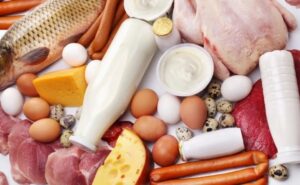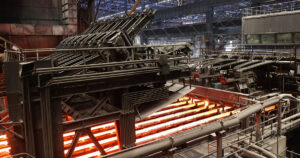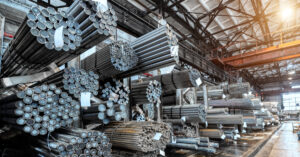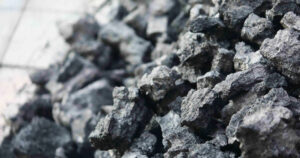
Agricultural production in Ukraine in January-August 2025 decreased by 8.4% compared to January-August 2024, according to the State Statistics Service (SSS).
According to its data, during the reporting period, livestock production decreased by 9.7%, and animal husbandry by 4.9% compared to the same period in 2024.
At the same time, enterprises reduced production rates more actively than households – by 9.6% and 6.3%, respectively.
In January-August of this year, enterprises reduced crop production by 12.2% and livestock production by 2.4%, while households saw a 5.3% drop in crop production and an 8.6% drop in livestock production compared to the same period in 2024.
A significant drop in production was recorded in the Donetsk region, where production volume is only 53.6% of last year’s figure. A relatively significant decline was also recorded in the Kherson (72.2%), Dnipropetrovsk (78.5%), and Poltava (79.0%) regions.
At the same time, some regions are showing positive dynamics. Thus, production grew the most in Lviv region – up to 102% – and in Ivano-Frankivsk region – up to 100.6%.

The Kametstal plant, part of the Metinvest mining and metallurgical group (Kamensk, Dnipropetrovsk region), has significantly increased its production of continuously cast steel billets using the stop casting technology due to increased demand.
According to the company, one of the current trends in the metal market is increased demand for continuously cast steel billets using the stop casting technology.
“Thanks to systematic measures, the team at Kametstal’s converter shop exceeded its initial targets for this year and achieved a monthly production of 15,000 tons of high-quality billets at the continuous casting machine (CCM-1), which is twice as much as last year’s monthly production volumes,” the press release states.
At the same time, it is noted that the development and improvement of steel casting technology using stop mechanisms on the continuous casting machine (CCM) No. 1 remains in the focus of the company’s specialists, as it allows them to obtain metal with higher requirements for chemical composition and macrostructure, which yields higher profits than conventional billets. One of the primary goals set by the steelmakers is to increase the production of billets using this technology, and they are persistently pursuing this goal. This year, 58,433 thousand tons of high-quality billets have already been cast on the first machine, thus exceeding the annual production volume for 2024 by more than 5 thousand tons in eight months.
“Among the priority measures for achieving ambitious goals is the development and improvement of the parameters for the automatic start of the machine’s streams during stop casting, which has a positive effect on the quality and productivity of casting by minimizing the human factor in the process. While at the beginning of 2025, successful starts of the continuous casting machine in “Auto Start” mode accounted for almost 80%, today, technologists are already performing more than 90% of successful starts without switching to manual mode,” the plant emphasizes.
Also this year, as part of the program to upgrade the main steelmaking equipment, an investment project was implemented – during the first stage of reconstruction at continuous casting machine No. 1, frequency converters and cable and wire products were replaced, and the software was updated. As a result, the operation of the pulling stoves has improved, and thus the smoothness of pouring and the stability of launches.
After the implementation of this investment project, the first machine achieved a record production of high-quality hot-rolled coils in July – 16,159 thousand tons, while last year the maximum monthly production of such products was 8,256 thousand tons.
An important vector is the increase in the seriality of melts during stop casting of steel. Additional technological measures have made it possible to achieve an average seriality of almost six melts this year, while the average seriality in 2024 was 5.3 melts.
As reported, Metinvest will invest more than UAH 2.5 billion in the modernization of Kametstal in 2025.
Kametstal is part of the Metinvest Group.

In January-August 2025, Ukrainian metallurgical enterprises increased pig iron production by 8% compared to the same period last year, to 5.109 million tons.
According to Ukrmetallurgprom, pig iron output in August amounted to 747,500 tons, compared to 621,100 tons in July.
For comparison, in 2024, Ukraine produced 7.090 million tons of pig iron (+18.1%), in 2023 – 6.003 million tons (-6.1%), in 2022 – 6.391 million tons (-69.8% compared to pre-war 2021).

Ukrainian metallurgical companies reduced their total rolled steel production by 1.4% in January-August 2025 compared to the same period last year, from 4.318 million tons to 4.256 million tons.
According to the Ukrmetallurgprom association, 633,200 tons of rolled steel were produced in August, compared to 552,000 tons in July.
As reported, Ukraine increased rolled steel production by 15.8% in 2024, to 6.222 million tons. In 2023, this figure increased by 0.4% to 5.372 million tons, and in 2022, it decreased by 72% compared to 2021.

PJSC Zaporizhkox, one of Ukraine’s largest producers of coke and chemical products and a member of the Metinvest Group, increased its blast furnace coke production by 1.46% in January-August this year compared to the same period last year, from 584,100 tons to 592,600 tons.
According to the company, 79.6 thousand tons of coke were produced in August, compared to 78.9 thousand tons in the previous month.
As reported, Zaporizhkox increased its production of blast furnace coke by 2.1% in 2024 compared to 2023, to 874,700 tons from 856,800 tons.
In 2023, Zaporizhkox increased its blast furnace coke output by 16% compared to 2022, to 856,800 tons from 737,400 tons.
Zaporizhkox has a complete technological cycle for processing coke chemical products.
Metinvest is a vertically integrated mining group of companies. Its main shareholders are SCM Group (71.24%) and Smart Holding (23.76%). Metinvest Holding LLC is the managing company of the Metinvest Group.